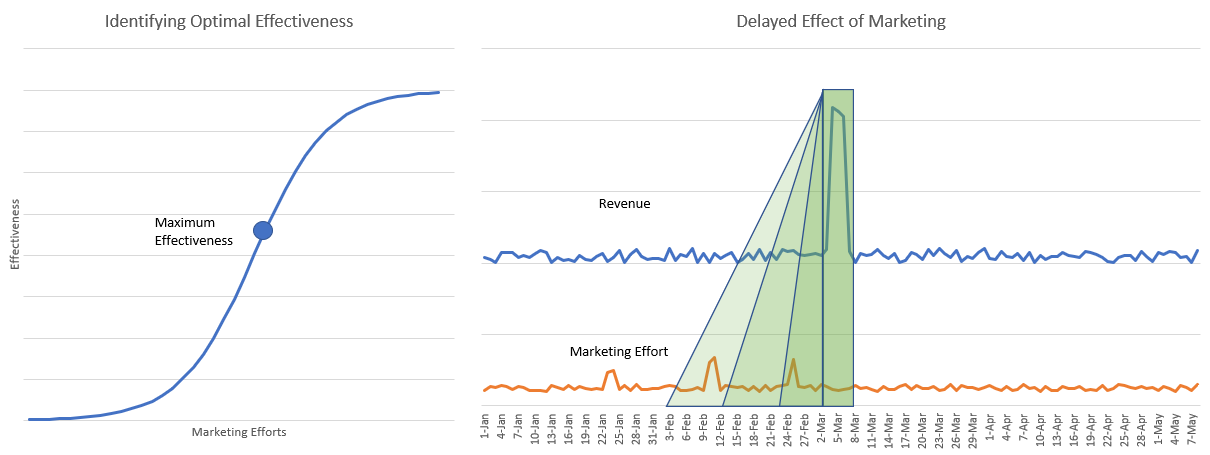Superior attribution in the post-cookie marketing world.
By Zach Brown, Lead Analyst
“Half of my advertising spend is wasted; the trouble is, I don’t know which half.”
The quote, which is often attributed to either John Wanamaker or Lord Leverhulme, is a life-long cry of marketers who are attempting to prove success in their efforts. The digital age provided tools to marketers to help solve this question in the form of cookies.
Cookies, small pieces of data stored within the web browser when marketing is displayed, can be retrieved by the marketer when a sale is converted, connecting that sale back to advertising displayed to the user.
As companies, governments and the public become more cognizant of the privacy concerns of client-side attribution technologies – like cookies—the marketing world will soon have to find a new method of determining which half of their advertising spend is wasted.
Fortunately, as technology has empowered the rise of machine learning and advanced data science, the solution to cookie-less attribution is becoming more powerful than the standard methods of attribution.
In fact, data science attribution models can enable marketers to understand more than just how their leads or sales came in, but also how they should have spent their marketing dollars and how they should be spending them tomorrow.
How it works
Marketing mix models analyze marketing data, revenue data, seasonality and even variables that are outside the business’ control but impact the business (e.g., competitor spend, inflation, etc.). This analysis identifies the relationships between these marketing and economic variables and the business outcome desired – like revenue or leads.
Using data science to predict, observe, revise and predict again, marketing mix models become more accurate and powerful as more data becomes available to them.
Beyond simple linear relationships, marketing mix models also leverage ad stock relationships. This relationship utilizes a combination of fitted curves and lagged effect to generate an understanding of when investments start generating diminishing returns, how long it may take for marketing to take effect, and how long that marketing remains effective. In this way, a marketing mix model can find the ideal method of utilizing marketing budgets beyond a single day’s spend, but in a way to maximize effectiveness over a longer period of time.

Furthermore, these models can analyze the combination of channels or campaigns together, rather than siloed, to understand how a multi-part marketing plan works together to create a holistic journey—effectively mapping the marketing funnel using data science.
The output of this process maps effectiveness among channels, documentation of what share of revenue is derived from what activities (or outside influences), and recommendations for more optimal marketing allocation.
Marketing attribution beyond the cookie
As impressive as the method of attribution is, the implications enable marketers a deeper view of their marketing success than cookies ever did. In a cookie-based digital campaign, the marketer must rely on a comprehensive view of an individual to appropriately allocate the success of their marketing.
If a user saw an ad and then walked into a store or saw a Facebook post and then told a friend in person, it’s likely that these marketing connections would be lost by the typical model of attribution. If at any point the cookie becomes disconnected from the consumer, true allocation of marketing effectiveness is lost.
In fact, some marketers—in ever-increasing efforts to understand success—are pushing for further, invasive methods of following individuals’ treks through their day-to-day lives, to ensure that any scrap of allocation is being properly documented back to the person’s name and identity. It’s these very efforts that are leading to public distaste and the legislative end of traditional attribution.
But by removing the cookie from the attribution methodology and instead allowing revenue and success metrics to inform the success of marketing, marketers simultaneously preserve individual privacy of consumers and attribute a greater share of marketing to its proper source.
It’s no longer necessary to follow every consumer through every step of their life to understand which marketing led to them to buy (if any). Now, the underlying trends in revenue and marketing activity reveal the habits of the masses.
Further, as data science becomes more integral to the marketing decisions, it becomes possible to know the full extent of the impact of a channel or campaign. For example, it’s no longer just how much revenue streaming advertising yielded, but how streaming advertising might enable greater success in neighboring or distant channels, such as affiliate advertising or paid search ads. This sort of understanding is far beyond what could be understood by relying upon the cookie as the prime source of attribution data.
Predictive becomes prescriptive
As data models and data science become more integral to marketing strategy, it’s possible to begin to take the predictive capabilities of data science and turn it into a prescription for tomorrow’s marketing dollars.
By mapping the relationship of marketing efforts on revenue and on the success of neighboring channels, data science can begin to tell marketers which channels or campaigns work best together and how much to spend on each for maximum effectiveness of a marketing budget.
For this reason, companies are beginning to add model-based attribution even before cookie-based attribution goes away. Model-based attribution has proven to be more than a replacement for the cookie problem, but value in addition to the current attribution methodology.
As data science and model-based attribution become more powerful and intuitive, it’s exciting to visualize what sort of tools this technology may enable for the marketers of tomorrow in a post-cookie marketing world.
More Insights
- August 2, 2022 To TikTok or not to TikTok: influencer edition.
- February 18, 2022 Metaverse SEO: Thoughts to prepare your brand.
- February 10, 2022 Super Bowl brands capitalize on the pandemic mindset
